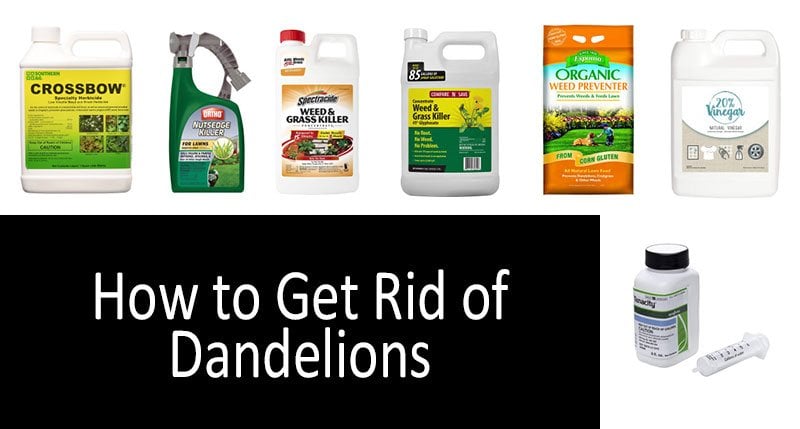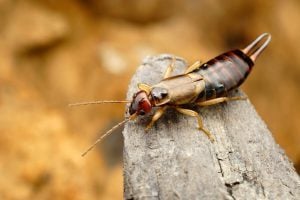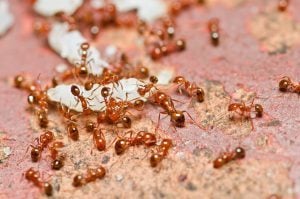What is the best way to get rid of dandelions permanently? Depending on your needs and the size of weed infestation, you have three options: selective, non-selective, and all-natural organic herbicides. Non-selective herbicides are more potent and fast-acting but kills plants indiscriminately. Glyphosate-based products are the safest ones in this category. Herbicides made with Diquat are good for replacing and renovating the lawn. If you want to prevent any harm to other plants and grasses, choose selective herbicides that affect only a limited range of weeds. Some of them work by inhibiting photosynthesis in dandelions, killing them slowly. There are also organic options, such as solutions based on corn gluten meal. This herbicide kills dandelions by preventing their roots from growing while being beneficial for the lawn itself.
|
1. Southern Ag CROSSBOW32 Weed & Brush Killer |
 Check the current price |
|
2. Tenacity Turf Herbicide |
 |
|
3. Ortho Nutsedge Killer for Lawns |
 Check the current price |
|
4. Compare-N-Save 016869 Concentrate Grass and Weed Killer |
 Check the current price |
|
5. Spectracide Weed & Grass Killer Concentrate |
 Check the current price |
|
6. Espoma Organic Weed Preventer |
 Check the current price |
Dandelions are nice flowers but they can be a problem for gardeners and homeowners. Not only do dandelions tend to push out valuable plants and grass, but they also take away nutrients and water from them. Even worse, dandelions are hard to control because their seeds are good at floating in the air. The fluffy and porous structure allows dandelion seeds to travel for up to 62 miles, although generally, they land within 30 feet of their parent plant. According to scientists, they are considered to be the farthest traveling seeds in the plant world. This means that even though you have eradicated these plants in your lawn, you should also keep your neighbor’s dandelions out of your property.
Types of Herbicides: What Gets Rid of Dandelions
The fastest and most effective way to kill dandelions in the yard is to apply herbicides. The only problem with this method is the risk of harming other plants and beneficial insects. However, things are not so straightforward and herbicides are not all the same. They are divided into two types depending on the mode of action.
Selective Herbicides
The first one is selective broadleaf herbicide that targets only certain kinds of plants, such as dandelions and other broadleaf weeds. The advantage of using these products is that they do not harm most grass species and, therefore, are safer for your lawn. You can check the product label to see the list of target weeds of this particular herbicide.
For instance, grasses are less sensitive to triclopyr than woody and broadleaf plants. Available in granules, liquids, and powders, triclopyr-based products have been effectively used for half a century. You can spray them on foliage, soil, and tree bark. Triclopyr mimics a plant’s growth hormone to penetrate deeper into the plant. It kills the plant slowly by causing uncontrolled growth.
The Southern Ag CROSSBOW32 Weed & Brush Killer is made with a blend of ingredients including triclopyr. Another active ingredient is 2,4-D, a low-toxic acid that kills broadleaf weeds in a week or two. It works well on dandelions and clover while having no effect on grass species. The 32-ounce concentrate should be diluted at a ratio of 4 to 6 ounces per three gallons of water. The product is intended for spot application and should be sprayed directly on foliage. With a rating of 4.6 out of 5 stars, it is very popular among customers. One of the buyers says that his lawn was covered in dandelions and clovers. Once he sprayed this stuff all over the yard, the weeds began to die within a day.
{code 1250}
Mesotrione is a new promising selective herbicide. This organic compound is chemically derived from an evergreen shrub, Crimson Bottlebrush. Developed for use in maize, it can kill many grass and broadleaved weeds. What makes this ingredient especially popular is the combination of efficiency and safety. While being organic, it can be applied to both the soil to control emerging weeds and the leaves of the grown dandelions.
Take a look at the Tenacity Turf Herbicide. Yes, it is pretty expensive and will cost you some $80-$90, but it is worth buying if you have valuable plants in your lawn and do not want to harm them. Formulated with 40% mesotrione, it works by inhibiting photosynthesis in dandelions, crabgrass, clover, carpetweed, and more. Despite the price, it is highly popular among homeowners. The product comes with a measuring syringe for easier application. Buyers say this herbicide works very well but it is slow, so do not expect burn-off results within a day. Keep in mind that multiple applications may be needed.
{code 1251}
Another option is a sulfentrazone-based ready-to-use solution. The Ortho Nutsedge Killer for Lawns comes in a convenient 32-ounce spray bottle that connects directly to a hose. Just turn on the water and spray evenly over the lawn. The active ingredient, sulfentrazone, inhibits photosynthesis in plants and they die after exposure to light. This product controls over 50 types of weeds and should be used for spot treatment on the lawn. Apply the solution to weeds that are no more than 3 inches high and re-apply it several times throughout the season. Avoid spraying it directly on flowers, ornamentals, and vegetables.
{code 1252}
Non-Selective Herbicides
Non-selective herbicides kill all plants treated with the product and should be applied with more care. Scientists recommend using this type of herbicides for spot treatment of dandelions. For example, these products are used to kill dandelions on walkways, driveways, flower beds, or cracks. Avoid spraying the entire soil surface because they kill vegetation indiscriminately.
The most widely used and effective non-selective herbicide is glyphosate. Once applied to the foliage, it moves to the roots and other parts of the plant. This is how glyphosate kills most weeds, including broadleaves, grasses, and sedges. According to NC State Extension experts, it is the least toxic and most environmentally-friendly among non-selective herbicides. Glyphosate will not harm shrubs and trees within the treated area, provided you do not spray directly on them.
The most popular product in this category is the Compare-N-Save 016869 Concentrate Grass and Weed Killer. It targets over 170 types of weeds, including dandelions. eliminating them in a single application. The herbicide contains 41% glyphosate and covers more than 25,000 sq ft. One gallon container of the concentrate makes up to 85 gallons of ready-to-use solution. The product can be used in fruit and vegetable gardens as well as around flower beds, trees, and shrubs. Apply the herbicide no less than 2 hours before a rain, however, the best time for spraying is a warm sunny day.
Diquat works much faster and is more toxic. More sensitive plants and grasses will turn yellowish-brown and die soon after application, while others will perish later. This chemical is registered in the U.S. but is not approved in the EU. This herbicide works on contact and is applied when dandelions begin to grow. It eliminates only smaller weeds while larger ones will be only injured, not killed. The advantage of Diquat is that it is less sensitive to high and low temperatures than other herbicides. So you can safely use it in cool or warm weather.
Based on Diquat Dibromide, the Spectracide Weed & Grass Killer Concentrate produces the result the next day after application. The product should be used for spot spraying in the lawn or herbicide treatment of driveways, patios, cracks in the building, or fences. To apply it around trees and shrubs, cover them with a piece of cardboard before spraying. The herbicide can be used on large areas if you need to remove the old lawn. Mix 3 ounces of the concentrate with one gallon of water and pour the solution in a sprayer bottle. It will kill almost any plant but tough weeds will require multiple sprays. The solution remains effective even after rainfall and watering.
How to Get Rid of Dandelions Naturally
You may try to get rid of dandelions without chemicals. These methods are generally less effective, however, much depends on timing and your own diligence. Now, let’s see what options we have.
- Remove dandelions by hand-pulling. This method is successful only when you do it repeatedly for a long time because dandelions have a deep tap-root system. Scientists from Oregon State University recommend applying this method when the soil is moist and soft. Cut off a dandelion at least four inches below the ground and spread shredded bark approximately three inches deep over the area. This will block sunlight from reaching the leaves of dandelions and will eventually kill them.
- Horticultural vinegar. There are two types of vinegar available on the market: household vinegar and horticultural vinegar. The former is ineffective against weeds because of low acid concentrations. Horticultural vinegar is much stronger as it contains 20% acetic acid. The substance is able to kill dandelions but can harm you, too. When handling horticultural vinegar, wear gloves, a mask, and a long-sleeve shirt. The downside for this method is that vinegar does not affect the weeds’ roots and, therefore, does not provide a long-term solution.
You may buy this 20% White Vinegar – 200 Grain Vinegar Concentrate intended for gardening and laundry. It is a multi-use solution that not only kills weeds but also cleans rust, removes stains, and eliminates odors. Mix one gallon of vinegar with a cup of salt and add one tablespoon of dish soap. Shake up the solution carefully and pour it into a spray bottle. Buyers say that it works like a charm.
-
- Corn gluten meal is another organic method suggested by experts. This yellow powder is mainly used in farm animal food products but is also effective in weed control. It prevents the weed’s roots from forming and growing. As a result, the seedling dies because it cannot get water and nutrients from the soils. That is why it is crucial to apply corn gluten meal in the proper time. Even worse, if the weed has already taken root, corn gluten will fertilize it instead of killing. Besides, this method works slowly. After the first application, only half of the weeds will be suppressed. To kill about 80% of the weeds in your lawn, you will need to apply corn gluten several times.
- Corn gluten meal is another organic method suggested by experts. This yellow powder is mainly used in farm animal food products but is also effective in weed control. It prevents the weed’s roots from forming and growing. As a result, the seedling dies because it cannot get water and nutrients from the soils. That is why it is crucial to apply corn gluten meal in the proper time. Even worse, if the weed has already taken root, corn gluten will fertilize it instead of killing. Besides, this method works slowly. After the first application, only half of the weeds will be suppressed. To kill about 80% of the weeds in your lawn, you will need to apply corn gluten several times.
And yet, it is worth trying. We recommend the Espoma Organic Weed Preventer made from 100% corn gluten meal. It prevents dandelions and other weeds from growing and is completely safe. Kids and pets can enter the lawn immediately after application. The nice part about this product is that it kills weeds while feeding your lawn. Apply the solution every spring and fall, at least twice a year.
When to Get Rid of Dandelions in the Lawn: Scientists’ Opinion
As you see, timing is essential in dandelion control. When applied at the wrong time, even the most effective herbicide can become useless. New dandelions germinate primarily in late September, so the best time for eliminating broadleaf weeds is mid-October. According to Kansas State University researchers, there are two reasons the fall is the best time to control dandelions.
First, young plants emerging early in the fall are small and easier to eliminate. Secondly, experts say that at this time of year, it is easier for herbicides to translocate to the roots. This is because in the fall, materials move through the plant more actively than in the spring. Also, try to make applications in warm weather, when it is at least 50 degrees. Cold temperatures slow down the translocation process in plants, decreasing the treatment efficiency.
Meanwhile, scientists from the University of Nebraska Lincoln remind that early spring is the second-best time for dandelion control. They also advise homeowners to avoid mowing the lawn two to three days before and after spraying herbicides. This will give the herbicide enough time to get to the plant’s roots. Do not use herbicides if rain is forecast to prevent it from being washed off. Nor should you irrigate the lawn on the day of application.
Expert Opinion: Brian Hefty, Farmer, Agronomist, TV Personality
 Brian Hefty, Farmer, Agronomist, TV Personality
Brian Hefty, Farmer, Agronomist, TV Personality
Brian Hefty is an and co-host of “Ag PhD,” the most-watched agronomy TV show in the USA. In 1990, he graduated from South Dakota State University, worked for FMC, and then has been the CEO at Hefty Seed Company for two decades. Brian became a co-host of the “Ag PhD” in 1998.
The most common issue we see in fields is when people are out spraying too early. And by too early I mean the plant is not growing actively and the weather is too cold. We really want to see the daytime temperature around 70 plus, we want the nighttime temperature at 50 degrees plus… Or if you are after the first frost in the fall, just go out there with a really big rate of either 2,4-D or dicamba that works quite well. We do not like the use of dicamba in lawns but 2,4-D would be just fine.
3

Ortho WeedClear Lawn Weed Killer Ready to Spray – Weed Killer for Lawns, Crabgrass Killer, Also Kills Chickweed, Dandelion, Clover & More, Fast Acting Weed Killer Spray, Kills to the Root, 32 oz.





















